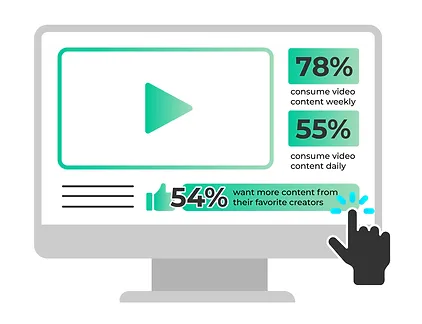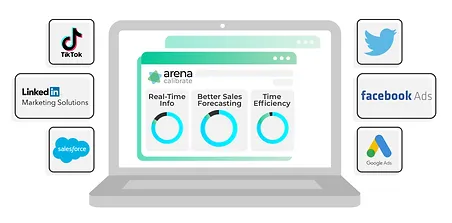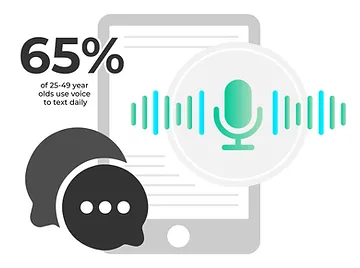We’ve experienced a hurricane of events in the digital marketing landscape this year but the forecast is set to change in 2022. To compete and stay on the front foot, you’ll need to keep an eye on the predicted trends that are coming your way.
Our team has taken a deep dive into the data and pulled out the top 4 trends that you must prepare for in 2022. Check them out below!
Conversational marketing will push leads down the funnel faster
The traditional funnel is becoming outdated. Customers don’t have time to jump through different hoops that involve cold calls, emails, and landing pages. These still play a part but the savviest businesses recognize that customers expect everything to be instant.
Conversational marketing is all about breaking down the barriers by adopting a customer-centric approach that uses a dialogue-driven approach to marketing. Instead of lead capture forms, swap them for live chatbots to engage with visitors that land on your site.
This is quicker, more human, and more engaging. People who can get instant responses to queries are more engaged with your site and will be pushed down the funnel far more efficiently. You don’t have time to make customers go through all the stages of the traditional funnel and the stats show it:
- Only 28% of people answer cold calls (Selling Signals, 2021)
- Average open rates for email have gone down to 21% (Super Office, 2021)
- The average landing page conversion rate is only 2.35% (Impact, 2021)
Short video content will be a priority

The future is video content and it’s already taking the digi-sphere by storm. If you haven’t already noticed this mega-shift, then here are some important numbers for you to look at:
- 69% of people would rather learn about a new product or service by watching a video (Wyzowl)
- 78% of people consume video content every week and 55% watch online videos every day (Social Media Week).
- Nearly two thirds of customers prefer videos to be less than 60 seconds long (Responsive Inbound Marketing)
- Having a video on your landing page can increase conversions by nearly 80% (Responsive Inbound Marketing)
- The video marketing industry has exploded and it’s now worth $135 billion (Social Media Week)
Unified marketing dashboards are on the rise
Businesses are mining data as if it were gold to remain competitive. But having mountains worth of data that is difficult to read is problematic - gathering insights from data can burn time.

Unified marketing dashboards solve this problem by pulling in data from different marketing campaigns and storing it in one place. Marketing managers can gain a holistic perspective on their overall performance from a quick glance.
Companies are fast recognizing the importance of having unified marketing dashboards due to the number of benefits they offer:
- Better sales and revenue forecasting: marketing dashboards can make it easier to identify customer buying patterns and will allow you to make more accurate predictions.
- Time efficiency: Digging through reams worth of data for key insights burns a lot of time. Why do this when a marketing dashboard can summarize and present everything to you within seconds?
- Real-time customer information: real-time data that’s easily accessible keeps your finger on the pulse of your consumers, providing you with the agility to make quick and calculated decisions to improve performance.
Voice search will continue to grow

When you think of Alexa, Siri or Cortana then you’ll recognize how tightly woven these voice-activated digital assistants have been woven into our lives. According to PWC, 65% of 25-49-year-olds use voice search at least once a day.
Marketers need to optimize keywords for voice searches since they differ substantially from what users type into search engines. Here’s how:
- Keyboard search: ‘Chinese Restaurant near me’
- Voice search: ‘Where is the closest Chinese restaurant?




